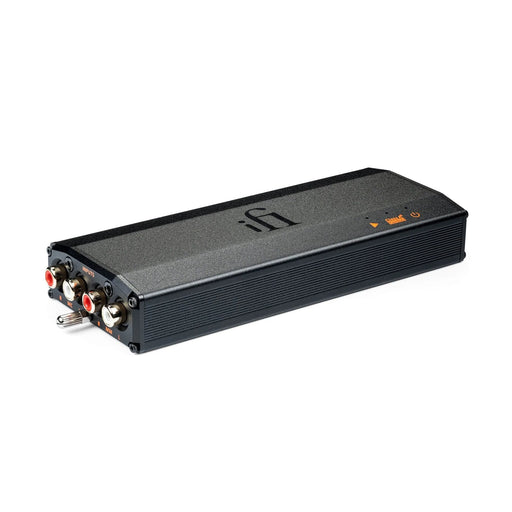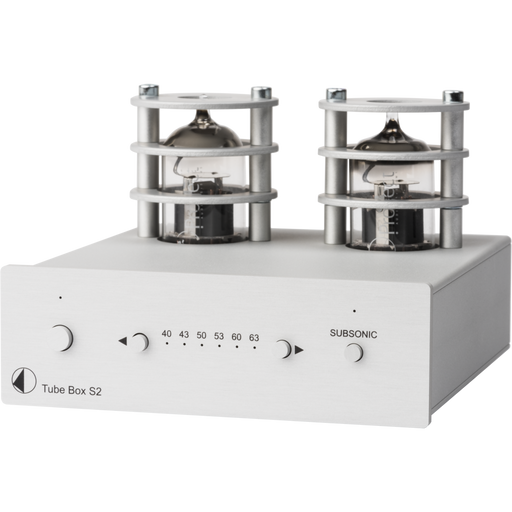Phono Pre-amplifiers
Without a phono preamp, your beloved vinyl collection is really nothing more than a stack of useless plastic discs with a nice cardboard sleeve around them. If you love vinyl, you can't ignore them!
The music signal coming from the stylus is so weak that it must be amplified and equalised before it can be sent to the amplifier. And for this a so-called phono preamplifier is needed. This preamplifier is often already integrated into the turntable or amplifier, otherwise you can add an external preamplifier. Anyway, without a phono preamplifier you won't get good sound from your records.
Different amplification for Moving Magnet and Moving Coil
On the back of most phono preamps there is a small switch and a few separate inputs: one for MM and one for MC cartridges (Moving Magnet and Moving Coil). The reason for this is that these two elements have different output voltage and thus different volume. And so they also have to be reinforced differently.
An MC cartridge has a lower output voltage and therefore needs more amplification. An MM or High-Output MC cartridge should be amplified by about 40 dB, while an MC cartridge should be amplified by about 50-60 dB. A high-output MC cartridge must be connected to the MM input, even if it is an MC cartridge.
Ground / earthing - GND
Most preamps and amplifiers with an integrated "phono" input have a ground connection. This allows you to connect the ground of the turntable to the amplifier, so that the signal does not suffer from external noise.
Many turntables have grounding integrated into the signal cable. Other turntables require you to install a small cable yourself - and again, some turntables have no ground at all, which is then "built" into the signal cable. If there is a separate earth, it must always be connected. Some turntables get a lot of noise if the grounding is not connected.
Impedance
In addition to the above, it is important that the impedance of the element output and the input of the RIAA match. This means that the ratio between the electrical resistance of the two devices is correct, so that the signal is transmitted properly. In other words, the "input resistance" must match the connected element.
Many preamps don't even allow you to adjust the impedance. It is then preset to a level that suits most elements. With MM / HI-MC cartridges the input impedance is almost always 47k ohms. So you just need to connect them. Nice and simple!
With MC cartridges it gets a bit trickier: you usually use an input impedance of 10 - 200 ohms, so the input impedance is often set to 100 ohms. This value is almost always suitable for most MC cartridges.
However, because there are so many different MC cartridges, some (usually somewhat better) preamps offer the ability to vary the input impedance, allowing you to tune the to the specific cartridge connected. The sound changes dramatically if you set the wrong impedance, so always read the cartridge manual and see what the manufacturer recommends.
-
iFi audio micro iPhono3 Black Label Phono Pre-Amplifier
Phono PreamplifierOriginal price $1,499.00 - Original price $1,499.00Original price$1,499.00$1,499.00 - $1,499.00Current price $1,499.00| /Matt polished black. Super quiet noise floor.Our phono stage circuitry uses only the best audiophile components. Computer matched op-amps, high-gai...
View full details -
ProJect Tube Box S2 - Silver
Phono PreamplifierOriginal price $669.00Original price $669.00 - Original price $669.00Original price $669.00Current price $629.00$629.00 - $629.00Current price $629.00| /Unlike conventional phono stages, the Tube Box S2 harks back to a classic era of analogue sound, using a pair of valves to amplify your turntable’s...
View full details


